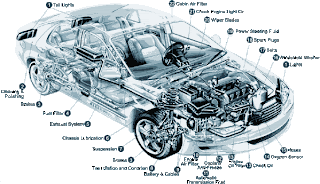A little motivational from our Training Division Manager, Dalwyn Diesel-Reynolds:
It has been said, that at the brink of death, one’s life flashes before their eyes. Kids, parents, childhood, choices, and work will be all that comforts you when your spirit checks out for the last time.
We, as human beings trying to survive in this world, spend so much time focused on the present, and the future, that we forget to reflect on the past. Neglecting life’s hard little teachings taught to us when we made calculated errors in judgment and choice.
Can any one of us truly say, “ok, I’ve done all I’ve wanted to do and achieved the best I could’ve done! Now lay me to rest"
We base our decisions on what we need now, rather than what will best tomorrow. Choosing to eat those delicious chocolates today, but cursing that decision when the belt had to be loosened for the ever widening waist line.
No one ever thinks of that day, but that day will come. When we will face our past again, stare it straight the face, and await it’s judgment.
How would you react?
A shake of the hand and a pat on the shoulder, with “Well done friend, we did it!” or would it be greeted with a shameful stare to the ground, with a “I’m so sorry, I wish I had another chance!”
Take a second to let that marinade in your thoughts a bit.
Now, right now, we all sit with the good and bad choices we’ve made, the happiness and sorrow we’ve been given and discovered.
And there’s nothing to do with it other than to reflect and learn.
Self-pity and depression must end, and optimism and positivity must take over.
We all sit at different places in the paths of our lives, but right now, all of us have come together in the twist and turns of life’s journeys.
It falls upon us, and only us, to make a success of what we have before us. To form a bond and friendship in the light of a single goal.
To take what we have been given, and make it blossom in the memories of our soon to be past and the ever so charming future.
To work together in unity and excellence, so that one day we can lift our fingers into the air and say, “I was a part of that group!”.
That group everyone will remember as being the best of the best. The group who prided itself as they walked victoriously down the road to success.
The group everyone will whisper to each other in awe and amasement...
the Skills Resource Group.


















































